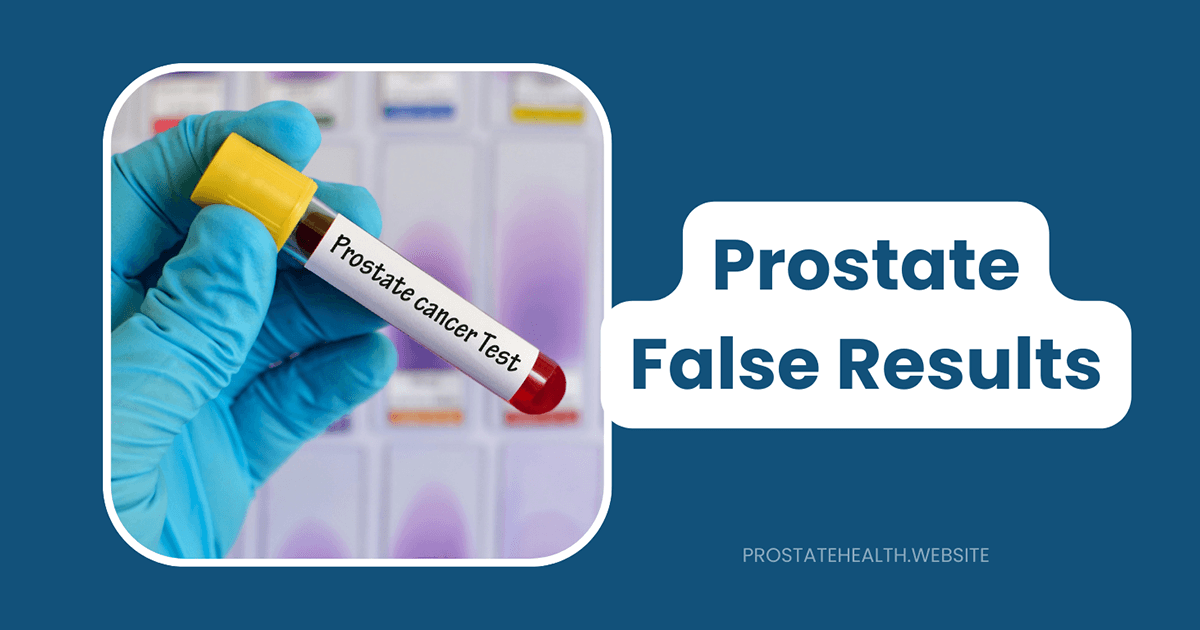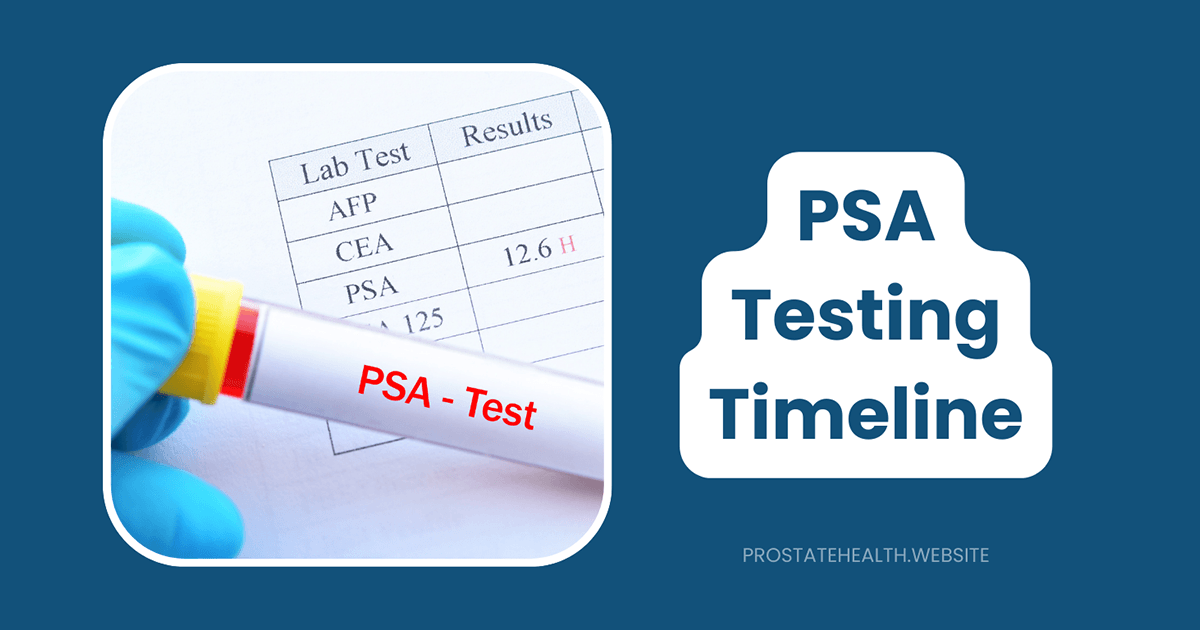False Positives and False Negatives in Prostate Testing

When it comes to prostate cancer testing, we often focus on getting a clear “yes” or “no” answer. But the reality is far more nuanced. Every test we use—from PSA blood tests to MRIs and biopsies—comes with a risk of false results that can lead to unnecessary anxiety, additional procedures, or missed cancers.
As someone who’s guided hundreds of men through the prostate cancer screening and diagnosis journey, I’ve seen firsthand how these false results impact lives. I’ve comforted men devastated by a cancer diagnosis only to learn after surgery that no cancer was present. I’ve also supported men whose initial tests missed a significant cancer, delaying necessary treatment.
Understanding the limitations of prostate testing isn’t about discouraging screening—it’s about approaching it with clear eyes and realistic expectations. Let’s explore what causes false results in prostate testing, how common they are, and what you can do to navigate this uncertain terrain.
Understanding False Positives and False Negatives
Before diving into specific tests, let’s clarify what we mean by false results:
False Positive: When a test indicates you have prostate cancer, but you actually don’t. This can lead to unnecessary anxiety, additional testing, and potentially unnecessary treatment.
False Negative: When a test indicates you don’t have prostate cancer, but you actually do. This can delay necessary treatment and give a false sense of security.
Both types of errors have significant consequences, which is why understanding their prevalence in different testing methods is crucial for making informed decisions about your prostate health.
PSA Testing: The First Line of Detection
The Prostate-Specific Antigen (PSA) test is usually the first step in prostate cancer screening. While it’s valuable as an initial screening tool, it’s also prone to both false positives and false negatives.
False Positives in PSA Testing
How common are they?
- About 75% of men with elevated PSA levels do not have prostate cancer
- Only about 25% of men who undergo a biopsy due to elevated PSA are found to have cancer
- Approximately 6-7% of men have a false-positive PSA result in any given screening round
What causes false positives in PSA testing?
- Benign Prostatic Hyperplasia (BPH): This non-cancerous enlargement of the prostate can raise PSA levels
- Prostatitis: Inflammation or infection of the prostate can significantly elevate PSA
- Recent ejaculation: Can temporarily raise PSA levels for 24-48 hours
- Urinary tract infections: Can irritate the prostate and increase PSA
- Recent procedures: Prostate exams, catheterization, or urologic procedures can elevate PSA
- Age: PSA naturally increases with age, even without cancer
- Certain medications: Some drugs, including testosterone replacement therapy, can affect PSA levels
The impact of false positives:
- Unnecessary anxiety and psychological distress
- Additional testing, including invasive biopsies
- Potential complications from biopsies (infection, bleeding, pain)
- Financial costs and time spent on follow-up care
As Robert, a 62-year-old patient, shared with me: “When my PSA came back at 5.2, my doctor immediately recommended a biopsy. I spent weeks worrying I had cancer. After an uncomfortable biopsy procedure and a painful infection that followed, we learned there was no cancer—just an enlarged prostate. I wish I’d known how common false positives were before going through all that.”
False Negatives in PSA Testing
How common are they?
- Approximately 15% of men with prostate cancer have PSA levels below the traditional cutoff of 4 ng/mL
- Some aggressive cancers can exist despite “normal” PSA levels
What causes false negatives in PSA testing?
- Arbitrary cutoff values: Using 4 ng/mL as the standard threshold misses some cancers
- Certain medications: 5-alpha reductase inhibitors like finasteride (Proscar) or dutasteride (Avodart) can artificially lower PSA levels by about 50%
- Obesity: Can dilute PSA concentration in blood
- Prostate cancer that doesn’t produce much PSA: Some aggressive variants produce less PSA
- Lab errors or variations: Different labs may have slightly different testing methods
The impact of false negatives:
- Delayed diagnosis of potentially significant cancer
- Missed opportunity for early treatment
- False reassurance leading to less vigilant monitoring
- Potential for more advanced disease at diagnosis
Michael, a 58-year-old patient, told me: “My PSA was always around 2.5, which my previous doctor said was fine. It wasn’t until I developed urinary symptoms and saw a urologist who did a thorough exam that we found a significant cancer that had been there for some time. The PSA test had given me a false sense of security.”
MRI: Improving Detection, But Not Perfect
Multiparametric MRI (mpMRI) has revolutionized prostate cancer detection by allowing visualization of suspicious areas before a biopsy. However, it too has limitations that can lead to false results.
False Positives in Prostate MRI
How common are they?
- Recent studies show false positive rates of approximately 52% with mpMRI
- PI-RADS 3 lesions (equivocal) have particularly high false positive rates
What causes false positives in MRI?
- Prostatitis: Inflammation can mimic cancer on MRI
- BPH nodules: Especially in the transition zone
- Post-biopsy changes: Previous biopsies can cause changes that look suspicious
- Anatomic variants: Normal anatomic features sometimes appear suspicious
- Reader inexperience: Interpretation requires significant expertise
- Technical factors: Image quality issues can lead to misinterpretation
Risk factors for false positives:
- Younger age: Younger patients have higher rates of false positives
- Low PSA density: A PSA density below 0.15 ng/mL² is associated with a >50% false positive rate
- Smaller lesions: Smaller lesions are more likely to be false positives
- Transition zone lesions: 74% more likely to be false positives than peripheral zone lesions
False Negatives in Prostate MRI
How common are they?
- Studies show false negative rates of approximately 15-16% with mpMRI
- This means about 1 in 6 significant cancers are missed by MRI
What causes false negatives in MRI?
- Small tumors: Cancers under 5mm are often missed
- Diffuse tumors: Some cancers grow in a pattern that’s hard to distinguish from normal tissue
- Certain tumor types: Some aggressive cancers don’t show typical MRI features
- Technical limitations: Suboptimal imaging protocols or equipment
- Reader inexperience: Missing subtle findings
Risk factors for false negatives:
- Older age: Older patients have higher rates of false negatives
- High PSA density: A PSA density above 0.45 ng/mL² is associated with up to 60% false negative rate
- Anterior location: Cancers in the front of the prostate are more commonly missed
James, a 65-year-old patient, shared his experience: “My MRI showed no suspicious areas, so my doctor suggested continued monitoring. But my PSA kept rising, and I pushed for a biopsy anyway. They found a significant cancer that the MRI had missed completely. I later learned that my high PSA density was a risk factor for a false negative MRI.”
Prostate Biopsy: The Gold Standard with Limitations
While biopsy is considered the definitive test for prostate cancer, it too can produce false results.
False Negatives in Prostate Biopsy
How common are they?
- Standard 12-core systematic biopsies can miss 20-30% of clinically significant cancers
- Even with MRI-targeted biopsies, 5-15% of significant cancers may be missed
What causes false negatives in biopsy?
- Sampling error: Biopsies sample less than 1% of the prostate volume
- Anterior tumors: Cancers in the front of the prostate are harder to sample with transrectal biopsies
- Small tumors: May be missed between biopsy cores
- Inadequate number of cores: Too few samples reduce detection rates
- Improper targeting: MRI-targeted biopsies depend on accurate fusion of images with real-time ultrasound
The impact of false negatives in biopsy:
- Delayed diagnosis and treatment
- Need for repeat biopsies
- Potential for disease progression during monitoring
False Positives in Prostate Biopsy
While less common than false negatives, false positives can occur in biopsy interpretation:
What causes false positives in biopsy?
- Mimickers of cancer: Some benign conditions can look like cancer under the microscope
- Interpretation challenges: Distinguishing low-grade cancer from some benign conditions can be difficult
- Technical artifacts: Tissue processing issues can alter appearance
Newer Tests: Reducing False Results
Several newer tests aim to reduce false results in prostate cancer detection:
EpiSwitch PSE Test
This blood test combines PSA with DNA markers and has shown promising results:
- Reduces false positives from 75% to just 7%
- Improves accuracy from 55% (PSA alone) to 94%
- Could potentially reduce unnecessary biopsies by up to 50%
Genomic Tests
Tests like Decipher, Prolaris, and Oncotype DX analyze genetic markers in biopsy tissue to better assess cancer aggressiveness:
- Help distinguish truly aggressive cancers from indolent ones
- Reduce overtreatment of low-risk disease
- Identify high-risk features that might be missed by conventional pathology
Biomarker Tests
Tests like the 4Kscore and Prostate Health Index (PHI) combine multiple blood markers:
- Improve specificity over PSA alone
- Help determine which men with elevated PSA truly need a biopsy
- Reduce unnecessary biopsies by 30-50%
Strategies to Minimize the Impact of False Results
While we can’t eliminate false results entirely, there are strategies to minimize their impact:
For Reducing False Positives
- Use age-adjusted PSA ranges rather than a single cutoff:
- Age 40-49: ≤2.5 ng/mL
- Age 50-59: ≤3.5 ng/mL
- Age 60-69: ≤4.5 ng/mL
- Age 70-79: ≤6.5 ng/mL
- Calculate PSA density (PSA level divided by prostate volume):
- A density below 0.15 ng/mL/cc suggests lower risk
- Particularly useful for deciding whether to biopsy PI-RADS 3 lesions
- Consider PSA kinetics rather than absolute values:
- PSA velocity (how quickly PSA rises)
- PSA doubling time
- Utilize advanced biomarker tests before proceeding to biopsy:
- 4Kscore
- Prostate Health Index (PHI)
- EpiSwitch PSE
- Seek experienced radiologists for MRI interpretation:
- Reader experience significantly impacts accuracy
- Consider second opinions for equivocal findings
For Reducing False Negatives
- Don’t rely solely on PSA cutoffs:
- Consider free PSA percentage
- Monitor PSA trends over time
- Pay attention to risk factors beyond PSA
- Consider MRI before biopsy:
- Helps target suspicious areas
- Improves detection of significant cancers
- Use appropriate biopsy techniques:
- MRI-ultrasound fusion targeted biopsies
- Systematic plus targeted approaches
- Consider transperineal approach for better sampling of anterior prostate
- Be especially vigilant with high-risk factors:
- High PSA density (>0.15 ng/mL/cc)
- Rapid PSA rise (>0.75 ng/mL/year)
- Family history of aggressive prostate cancer
- African American ethnicity
- Consider repeat testing if symptoms persist despite negative results
The Psychological Impact of False Results
The emotional toll of false results shouldn’t be underestimated:
Coping with a False Positive
- Seek a second opinion before proceeding to invasive procedures
- Ask about confirmatory tests that might clarify your risk
- Remember the statistics – most elevated PSAs are not cancer
- Connect with support groups of men who’ve had similar experiences
- Manage anxiety through mindfulness, exercise, and open communication
Dealing with a Potential False Negative
- Trust your instincts if symptoms persist despite negative tests
- Advocate for yourself if you have risk factors for missed cancer
- Seek second opinions from specialists in prostate cancer
- Consider additional testing if your risk factors warrant it
- Maintain regular follow-up even after negative tests
Real Men’s Experiences with False Results
The impact of false results is best understood through real experiences:
Thomas’s Story: The Impact of a False Positive
“At 58, my PSA jumped from 2.1 to 4.3 in a year. My doctor immediately recommended a biopsy, and I spent weeks convinced I had cancer. The biopsy was uncomfortable, and I developed a serious infection that put me in the hospital for three days. When the results finally came back negative, I felt relieved but also angry about what I’d gone through. I later learned that my PSA was likely elevated due to an undiagnosed prostatitis that the antibiotics for the infection ended up treating. Two years later, my PSA is stable at 2.0.”
Michael’s Story: Navigating a False Negative
“My PSA was always ‘normal’ at around 3.2, but I had a strong family history of prostate cancer. When I developed mild urinary symptoms, my doctor said it was just age-related BPH. It wasn’t until I sought a second opinion and had an MRI that they found a significant tumor in the anterior zone of my prostate—an area often missed by PSA testing alone. The cancer was still contained, but more advanced than it would have been with earlier detection. I learned that ‘normal’ doesn’t always mean ‘cancer-free,’ especially with risk factors like family history.”
Robert’s Story: Finding Balance
“After my first elevated PSA, my urologist suggested we look at the whole picture rather than rushing to biopsy. We calculated my PSA density, which was low, and did a 4Kscore test, which showed low risk for aggressive cancer. We decided to repeat the PSA in three months, and it had dropped back to normal range. By taking a measured approach, I avoided an unnecessary biopsy while still being thorough about my prostate health. Now I get regular PSA tests but understand that a single elevated result isn’t cause for panic.”
Questions to Ask Your Doctor About Test Results
When discussing prostate test results with your doctor, consider asking:
- Given my age and risk factors, what’s the chance this result is a false positive or false negative?
- What factors might be causing my PSA to be elevated besides cancer?
- Would additional tests like 4Kscore, PHI, or an MRI help clarify my risk before proceeding to biopsy?
- If my MRI shows a PI-RADS 3 lesion, what’s the likelihood it’s actually cancer?
- Given my PSA density, how should we interpret these test results?
- If we proceed with a biopsy, what approach will give us the most accurate results?
- If my biopsy is negative but my PSA continues to rise, what’s our plan?
- How experienced is the radiologist reading my MRI in prostate imaging specifically?
- How experienced is the pathologist who will examine my biopsy samples?
- Would getting a second opinion on my test results or biopsy slides be worthwhile?
Conclusion: Navigating Uncertainty with Knowledge
Prostate cancer testing exists in a world of probabilities rather than certainties. Every test has limitations, and false results—both positive and negative—are an inevitable part of the screening and diagnostic process.
This reality isn’t a reason to avoid testing altogether. Rather, it’s a call for a more nuanced, personalized approach that:
- Considers multiple factors beyond a single test result
- Weighs the risks of both false positives and false negatives
- Incorporates newer, more specific testing when appropriate
- Recognizes that the path to diagnosis isn’t always straightforward
By understanding the limitations of prostate testing and working closely with knowledgeable healthcare providers, you can navigate this uncertainty with confidence. Remember that knowledge is power—not to eliminate uncertainty entirely, but to make informed decisions in the face of it.
Have you experienced a false positive or false negative result in prostate testing? Share your story in the comments to help other men navigating this complex journey.






